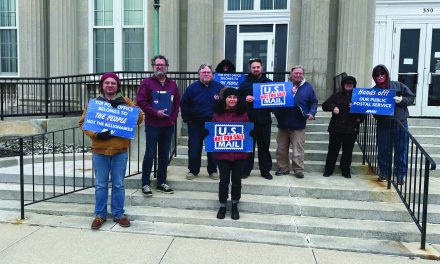Teachers, bus drivers, custodial staff, and food service workers in Fairfax County, Virginia, have voted to unionize, marking a pivotal moment for the union movement. The 27,000 new union members voted overwhelmingly to elect the Fairfax Education Association (teachers) and the Fairfax Teachers Association (other staff) as their collective bargaining representatives. This decision is a huge victory for unions in Virginia and is very important for unionization efforts in the South.
### The Path to Unionization
Fairfax County’s path to unionization was driven by a combination of factors, including stagnant wages, challenging working conditions, and the need for better support and resources for both teachers and support staff. Educators and staff expressed concerns about the lack of adequate pay raises, the burden of large class sizes, and insufficient support for special education and mental health services. In 2023, Fairfax County’s school board unanimously voted to allow teachers to have collective bargaining rights. The Fairfax Education Unions filed for a union election on May 1 and held voting over a few days in June.
But even before the County voted to allow the teachers and support staff to unionize, the state had to allow it to happen.
Randi Weingarten, president of the American Federation of Teachers (AFT), explains that organizing in Fairfax was a lengthy battle.
“It began in 2015, when we fought a ballot measure putting right-to-work in the state’s constitution. We kept trying to get the governors and the legislature to support collective bargaining in the public sector.”
The unions were persistent. Finally, when the Democratic Party controlled both legislative houses and the governor’s office in February 2020, a new state law was signed by Governor Ralph Northam, overturning a 1977 ruling and legalizing collective bargaining for local government employees. Post-pandemic, the National Education Association (NEA) successfully organized Richmond teachers, a precursor to both unions achieving this victory in Fairfax.
### Implications for the Future
This victory is the largest numerical success for the AFT in several decades. With Virginia’s unionization rate at a low 4.3 percent, this win boosts the number of Virginians under collective bargaining agreements by 12 percent.
Weingarten attributes the Fairfax victory to the growing public recognition of the importance of unions in improving workers’ lives. She points to Pew and Gallup polls showing that union approval ratings are at a 50-year high. Even teachers’ unions, long targeted by Republicans, have seen a surge in public support. A 2010 Hart Research poll revealed that voters disapproved of teachers’ unions by a 41 percent to 20 percent margin, and parents of school-age children disapproved by 37 percent to 20 percent. However, support has steadily increased as these unions advocated for smaller class sizes, comprehensive child services, and improved vocational programs, gaining parents’ approval. A recent Hart poll shows voters now approve of teachers’ unions by 45 percent to 21 percent, and parents by 53 percent to 15 percent.
Some labor advocates still believe that state power and political action distract unions from organizing workers, a view that is particularly nonsensical for public-sector employees and increasingly irrelevant for private-sector workers. The legal changes from Virginia Democrats’ 2019 victories, alongside new rules from President Biden’s National Labor Relations Board appointees, underscore that unions must both organize workers and support political victories to secure collective bargaining rights nationwide. This is evident from the experiences of teachers, staff, and school bus drivers in Fairfax County.







